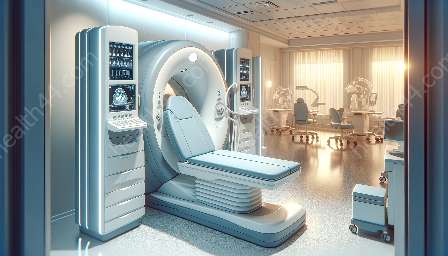Ventilators play a crucial role in providing life support to patients with compromised respiratory function. As part of diagnostic equipment and medical devices & equipment, understanding the functionality and types of ventilators is essential for healthcare professionals.
The Functionality of Ventilators
Ventilators, also known as respiratory or breathing machines, are vital medical devices used to assist patients who have difficulty breathing or cannot breathe on their own. They deliver controlled amounts of air and oxygen to the lungs, supporting the patient's ability to exchange gases in the lungs and ensuring adequate oxygenation and carbon dioxide removal from the body.
Ventilators can provide various modes of respiratory support, including pressure-controlled ventilation, volume-controlled ventilation, and support for spontaneous breathing. These different modes allow healthcare professionals to tailor the ventilator settings to the specific needs of individual patients.
Types of Ventilators
There are several types of ventilators, each designed to meet the diverse respiratory needs of patients. Some common types include:
- Invasive Ventilators: These ventilators involve the insertion of a tube into the patient's airway, typically through the mouth or nose. They are often used in intensive care units and during surgical procedures to provide complete respiratory support.
- Non-invasive Ventilators: These ventilators deliver respiratory support without the need for an invasive airway tube. They are commonly used for patients with less severe respiratory distress, such as those with sleep apnea or chronic obstructive pulmonary disease (COPD).
- Transport Ventilators: These portable ventilators are designed for use during patient transport, allowing for continuous respiratory support while transferring patients between healthcare facilities or during emergency medical transport.
The Importance of Ventilators in Healthcare
Ventilators are essential medical devices that are indispensable in critical care settings and emergency departments. They play a vital role in managing respiratory failure, acute lung injury, and other life-threatening conditions, providing crucial support to patients during their recovery.
In addition to their role in critical care, ventilators are also instrumental in diagnostic procedures, such as pulmonary function testing and respiratory system assessments. They enable healthcare providers to monitor and assess a patient's respiratory function with precision, aiding in the accurate diagnosis and treatment of respiratory conditions.
Advancements in Ventilator Technology
Over time, significant advancements have been made in ventilator technology, leading to the development of more sophisticated and user-friendly devices. Modern ventilators feature advanced monitoring capabilities, intuitive interfaces, and improved patient-ventilator synchrony, enhancing the overall quality of respiratory care delivery.
Moreover, the integration of artificial intelligence and machine learning algorithms into ventilator systems has the potential to optimize ventilation strategies, personalize treatment plans, and improve patient outcomes. These technological advancements are revolutionizing the field of respiratory care and reaffirming the critical role of ventilators in modern healthcare.
Conclusion
Ventilators are indispensable medical devices that are at the forefront of respiratory care, seamlessly integrating with diagnostic equipment and other medical devices & equipment to deliver comprehensive patient care. By understanding the functionality, types, and importance of ventilators, healthcare professionals can optimize their use, improve patient outcomes, and advance the quality of respiratory support in clinical settings.


